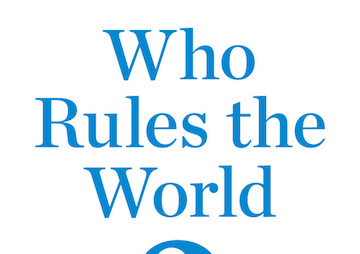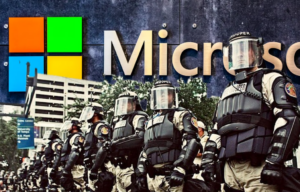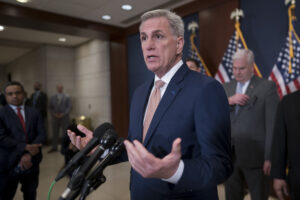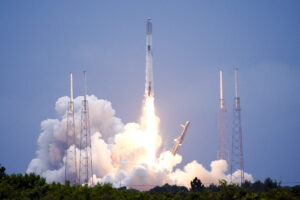American Power Under Challenge: Masters of Mankind (Part 1)
We cannot gain a realistic understanding of who rules the world while ignoring the “masters of mankind,” as Adam Smith called them: in his day, the merchants and manufacturers of England; in ours, multinational conglomerates, huge financial institutions, retail empires and the like. 1
2
3
4
1
2
3
4
The Challenges Today: Eastern Europe
Turning to the second region, Eastern Europe, there is a crisis brewing at the NATO-Russian border. It is no small matter. In his illuminating and judicious scholarly study of the region, Frontline Ukraine: Crisis in the Borderlands, Richard Sakwa writes — all too plausibly — that the “Russo-Georgian war of August 2008 was in effect the first of the ‘wars to stop NATO enlargement’; the Ukraine crisis of 2014 is the second. It is not clear whether humanity would survive a third.”
The West sees NATO enlargement as benign. Not surprisingly, Russia, along with much of the Global South, has a different opinion, as do some prominent Western voices. George Kennan warned early on that NATO enlargement is a “tragic mistake,” and he was joined by senior American statesmen in an open letter to the White House describing it as a “policy error of historic proportions.”
The present crisis has its origins in 1991, with the end of the Cold War and the collapse of the Soviet Union. There were then two contrasting visions of a new security system and political economy in Eurasia. In Sakwa’s words, one vision was of a “‘Wider Europe,’ with the EU at its heart but increasingly coterminous with the Euro-Atlantic security and political community; and on the other side there [was] the idea of ‘Greater Europe,’ a vision of a continental Europe, stretching from Lisbon to Vladivostok, that has multiple centers, including Brussels, Moscow and Ankara, but with a common purpose in overcoming the divisions that have traditionally plagued the continent.”
Soviet leader Mikhail Gorbachev was the major proponent of Greater Europe, a concept that also had European roots in Gaullism and other initiatives. However, as Russia collapsed under the devastating market reforms of the 1990s, the vision faded, only to be renewed as Russia began to recover and seek a place on the world stage under Vladimir Putin who, along with his associate Dmitry Medvedev, has repeatedly “called for the geopolitical unification of all of ‘Greater Europe’ from Lisbon to Vladivostok, to create a genuine ‘strategic partnership.’”
These initiatives were “greeted with polite contempt,” Sakwa writes, regarded as “little more than a cover for the establishment of a ‘Greater Russia’ by stealth” and an effort to “drive a wedge” between North America and Western Europe. Such concerns trace back to earlier Cold War fears that Europe might become a “third force” independent of both the great and minor superpowers and moving toward closer links to the latter (as can be seen in Willy Brandt’s Ostpolitik and other initiatives).
The Western response to Russia’s collapse was triumphalist. It was hailed as signaling “the end of history,” the final victory of Western capitalist democracy, almost as if Russia were being instructed to revert to its pre-World War I status as a virtual economic colony of the West. NATO enlargement began at once, in violation of verbal assurances to Gorbachev that NATO forces would not move “one inch to the east” after he agreed that a unified Germany could become a NATO member — a remarkable concession, in the light of history. That discussion kept to East Germany. The possibility that NATO might expand beyond Germany was not discussed with Gorbachev, even if privately considered.
Soon, NATO did begin to move beyond, right to the borders of Russia. The general mission of NATO was officially changed to a mandate to protect “crucial infrastructure” of the global energy system, sea lanes and pipelines, giving it a global area of operations. Furthermore, under a crucial Western revision of the now widely heralded doctrine of “responsibility to protect,” sharply different from the official U.N. version, NATO may now also serve as an intervention force under U.S. command.
Of particular concern to Russia are plans to expand NATO to Ukraine. These plans were articulated explicitly at the Bucharest NATO summit of April 2008, when Georgia and Ukraine were promised eventual membership in NATO. The wording was unambiguous: “NATO welcomes Ukraine’s and Georgia’s Euro-Atlantic aspirations for membership in NATO. We agreed today that these countries will become members of NATO.” With the “Orange Revolution” victory of pro-Western candidates in Ukraine in 2004, State Department representative Daniel Fried rushed there and “emphasized U.S. support for Ukraine’s NATO and Euro-Atlantic aspirations,” as a WikiLeaks report revealed.
Russia’s concerns are easily understandable. They are outlined by international relations scholar John Mearsheimer in the leading U.S. establishment journal, Foreign Affairs. He writes that “the taproot of the current crisis [over Ukraine] is NATO expansion and Washington’s commitment to move Ukraine out of Moscow’s orbit and integrate it into the West,” which Putin viewed as “a direct threat to Russia’s core interests.”
“Who can blame him?” Mearsheimer asks, pointing out that “Washington may not like Moscow’s position, but it should understand the logic behind it.” That should not be too difficult. After all, as everyone knows, “The United States does not tolerate distant great powers deploying military forces anywhere in the Western hemisphere, much less on its borders.”
In fact, the U.S. stand is far stronger. It does not tolerate what is officially called “successful defiance” of the Monroe Doctrine of 1823, which declared (but could not yet implement) U.S. control of the hemisphere. And a small country that carries out such successful defiance may be subjected to “the terrors of the earth” and a crushing embargo — as happened to Cuba. We need not ask how the United States would have reacted had the countries of Latin America joined the Warsaw Pact, with plans for Mexico and Canada to join as well. The merest hint of the first tentative steps in that direction would have been “terminated with extreme prejudice,” to adopt CIA lingo.
As in the case of China, one does not have to regard Putin’s moves and motives favorably to understand the logic behind them, nor to grasp the importance of understanding that logic instead of issuing imprecations against it. As in the case of China, a great deal is at stake, reaching as far — literally — as questions of survival.
The Challenges Today: The Islamic World
Let us turn to the third region of major concern, the (largely) Islamic world, also the scene of the Global War on Terror (GWOT) that George W. Bush declared in 2001 after the 9/11 terrorist attack. To be more accurate, re-declared. The GWOT was declared by the Reagan administration when it took office, with fevered rhetoric about a “plague spread by depraved opponents of civilization itself” (as Reagan put it) and a “return to barbarism in the modern age” (the words of George Shultz, his secretary of state). The original GWOT has been quietly removed from history. It very quickly turned into a murderous and destructive terrorist war afflicting Central America, southern Africa, and the Middle East, with grim repercussions to the present, even leading to condemnation of the United States by the World Court (which Washington dismissed). In any event, it is not the right story for history, so it is gone.
The success of the Bush-Obama version of GWOT can readily be evaluated on direct inspection. When the war was declared, the terrorist targets were confined to a small corner of tribal Afghanistan. They were protected by Afghans, who mostly disliked or despised them, under the tribal code of hospitality — which baffled Americans when poor peasants refused “to turn over Osama bin Laden for the, to them, astronomical sum of $25 million.”
Your support matters…Independent journalism is under threat and overshadowed by heavily funded mainstream media.
You can help level the playing field. Become a member.
Your tax-deductible contribution keeps us digging beneath the headlines to give you thought-provoking, investigative reporting and analysis that unearths what's really happening- without compromise.
Give today to support our courageous, independent journalists.






You need to be a supporter to comment.
There are currently no responses to this article.
Be the first to respond.